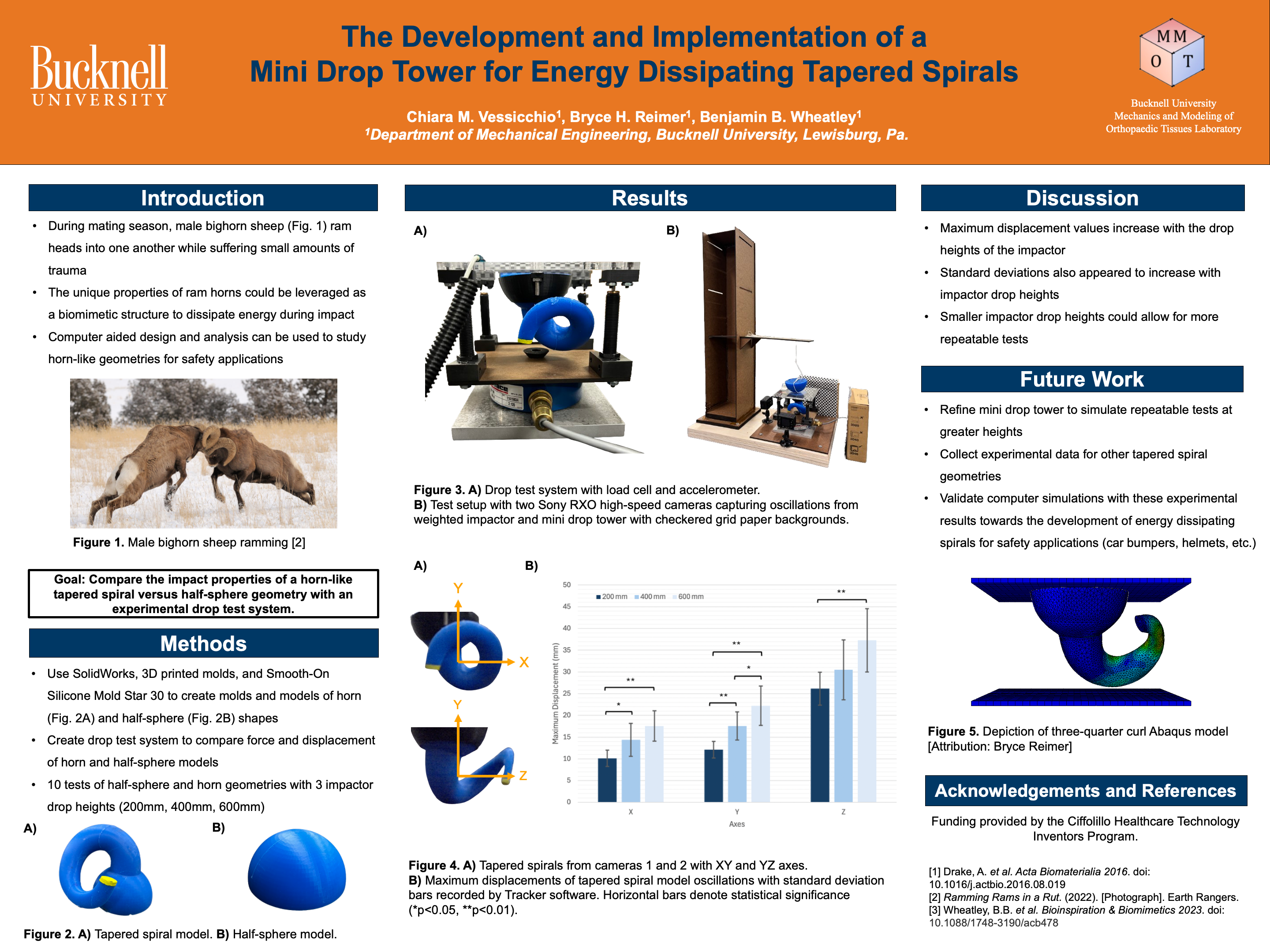
The Development and Implementation of a Mini Drop Tower for Energy Dissipating Tapered Spirals
Author:
Chiara Vessicchio ’26Co-Authors:
Bryce H. ReimerFaculty Mentor(s):
Benjamin B. Wheatley, Mechanical EngineeringFunding Source:
Ciffolillo Healthcare TechnologyAbstract
During mating season, male bighorn sheep establish dominance by forcefully ramming their horns into one another. Due to the unique material properties and geometry of their horns, they can do so while experiencing minimal head trauma. This study investigates the impact properties of a horn-like tapered spiral in comparison to a half-sphere geometry using an experimental drop test system. By analyzing how these biomimetic structures dissipate energy, this research aims to enhance the understanding of their impact mitigation. To maximize recorded oscillations of the tapered spiral model, SolidWorks was used to design 3D printed molds, which were cast in Smooth-On Silicone Mold Star 30 to create silicone models of the horn and half-sphere geometries. A drop test system equipped with a load cell, accelerometer, and two Sony RXO high-speed cameras captured the oscillations and maximum displacements of the silicone models following impact from a weighted drop at three heights. Results indicated increasing displacement values along the X, Y, and Z axes with higher drop heights. These findings highlight the need for further refinement of the drop tower to improve test repeatability and reduced standard deviations. Additionally, the data can be used to validate computational models for the development of energy dissipating spirals for safety applications such as car bumpers and helmets.